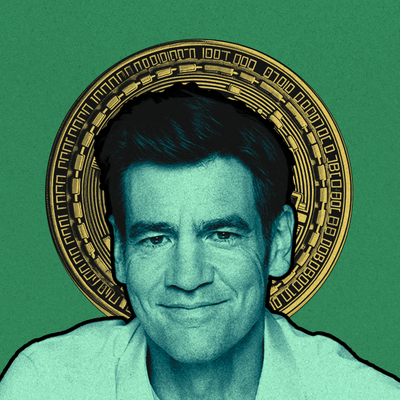
Sponsored By: Maven
This essay is brought to you by Maven.com, the home of career-building cohort-based courses that help ambitious professionals level up, get promoted, and build new skills.
1
When any company sells for $20+ billion dollars it’s big news. Accordingly, over the past week we have been blessed with an abundance of takes.
But what can we—product builders who would love to create something as successful as Figma—actually learn from this? The money is a clear signal that something important happened here. But what was it? How did it happen? And is there anything practical that we can learn?
Yes, I think there is.
The immediate impulse is to focus on the object-level lessons that pertain to the design tools industry. There were a lot of good takes this past week and I have a big list of them at the end of this piece. But for most of us, this layer of analysis is less relevant than the basic question of how Figma came to be. Especially in its formative years, Figma broke many of the “rules” of company building that Silicon Valley swears by—and it calls into question how valid those rules actually are.
I think this will be useful to know for anyone trying to build something important.
2
Normally it’s a terrible idea for founders to spend 4 years building a product before it launches. But in this case it worked out.
It’s equally “wrong” to start with a technology—in Figma’s case, WebGL—and search for a problem to solve with it. But that’s exactly what Figma did.
Last but not least, you’re not “supposed” to use fluffy business books like Blue Ocean Strategy to decide what product to build. And you’re definitely not supposed to design by committee. A commanding, visionary leader is supposed to earn original insights (secrets!) from personal experience, and then build an organization around it.
But here’s how CEO Dylan Field described the origins of Figma as we know it:
“We thought of [Figma] as interface design plus other things. And it wasn’t clear what those other things were. [So we] had a nice whiteboard session with the team where we just crossed all these things off. It’s like, what do we all think we’re doing? Okay, let’s cross them off one by one until we get to what we’re actually doing. And we used a cool framework, “eliminate, reduce, raise, create” from this book Blue Ocean Strategy to figure out what we are doing that’s different than the competition. What are we not doing that the competition is doing? What are we doing worse? And where are we going to make this brand new?”
Essentially, Figma ignored all the “rules” and sold for $20+ billion dollars anyway.
What does this say about people like me, who spend so much time trying to understand and discover the “true” rules? I think the main insight is the importance of humility. After the fact, the take-industrial-complex (myself included, if I’m honest) can always find a way to make any success fit the narrative they’re already bought into.
Sponsored By: Maven
This essay is brought to you by Maven.com, the home of career-building cohort-based courses that help ambitious professionals level up, get promoted, and build new skills.
1
When any company sells for $20+ billion dollars it’s big news. Accordingly, over the past week we have been blessed with an abundance of takes.
But what can we—product builders who would love to create something as successful as Figma—actually learn from this? The money is a clear signal that something important happened here. But what was it? How did it happen? And is there anything practical that we can learn?
Yes, I think there is.
The immediate impulse is to focus on the object-level lessons that pertain to the design tools industry. There were a lot of good takes this past week and I have a big list of them at the end of this piece. But for most of us, this layer of analysis is less relevant than the basic question of how Figma came to be. Especially in its formative years, Figma broke many of the “rules” of company building that Silicon Valley swears by—and it calls into question how valid those rules actually are.
I think this will be useful to know for anyone trying to build something important.
2
Normally it’s a terrible idea for founders to spend 4 years building a product before it launches. But in this case it worked out.
It’s equally “wrong” to start with a technology—in Figma’s case, WebGL—and search for a problem to solve with it. But that’s exactly what Figma did.
Last but not least, you’re not “supposed” to use fluffy business books like Blue Ocean Strategy to decide what product to build. And you’re definitely not supposed to design by committee. A commanding, visionary leader is supposed to earn original insights (secrets!) from personal experience, and then build an organization around it.
Want to stop shipping features that don’t move the needle?
Maven’s 1-week course, Cracking the Product Strategy will teach you how to build a winning strategy for your product by focusing on what matters most to drive growth.
It’s taught by Jackie Bavaro, who was most recently head of product management at Asana. During her tenure, she grew the PM team to over 20 people and helped Asana go from $0 to more than $100 million in annual recurring revenue.
But here’s how CEO Dylan Field described the origins of Figma as we know it:
“We thought of [Figma] as interface design plus other things. And it wasn’t clear what those other things were. [So we] had a nice whiteboard session with the team where we just crossed all these things off. It’s like, what do we all think we’re doing? Okay, let’s cross them off one by one until we get to what we’re actually doing. And we used a cool framework, “eliminate, reduce, raise, create” from this book Blue Ocean Strategy to figure out what we are doing that’s different than the competition. What are we not doing that the competition is doing? What are we doing worse? And where are we going to make this brand new?”
Essentially, Figma ignored all the “rules” and sold for $20+ billion dollars anyway.
What does this say about people like me, who spend so much time trying to understand and discover the “true” rules? I think the main insight is the importance of humility. After the fact, the take-industrial-complex (myself included, if I’m honest) can always find a way to make any success fit the narrative they’re already bought into.
But we should obviously try not to do this.
How many Figmas were never created because the plan seemed unwise to investors who think they know all the rules? Or because the founders doubted their own intuition?
And how many quixotic success stories get mutated after the fact to fit the narratives everyone already believes, even though the reality of how they succeeded is far more weird and interesting?
3
It reminds me of a quote from Emerson that I often return to:
“I read the other day some verses written by an eminent painter which were original and not conventional. The soul always hears an admonition in such lines, let the subject be what it may. The sentiment they instill is of more value than any thought they may contain. To believe our own thought, to believe that what is true for you in your private heart is true for all men, — that is genius.”
In the same way, the sentiment instilled by the example of Figma is of more value than any specific reason why Figma won. We can talk all day about the importance of collaboration in design, or about evolving from a tool to a platform, or any other completely valid object lesson that Figma can teach us. But all those insights can only become useful in our own lives if we are capable of metabolizing them.
As much as I love theories of business strategy, I must admit there’s a limit to how much theory can help on its own.
But where does that leave us? What actually can help?
I have two thoughts.
4
The first is how important it is to move yourself into a community that is already successfully doing the kind of thing you want to do.
Most knowledge that is useful for company building is tacit. You can’t simply write it down! You have to learn it by feel. Joining a company you want to emulate is the best way to do this. It’s no coincidence that so many successful founders tend to come from already-successful companies.
The reason this is so important relates back to the multi-causal nature of business. We don’t have controlled experiments, so the best we can do is throw ourselves into the details and learn how it works from the inside, so we can get some sense of what the patterns are at an intuitive level. So many complex things need to go right all at once in order for a new business to start working, it’s a tall order to figure it all out from scratch. Working somewhere great gives you a booster shot of all the cultural antibodies you need to avoid classic mistakes. And it gives you the courage to know when you can ignore the rules, because you better understand the specific contexts in which they don’t apply.
For example, with Figma, I’m sure the decision was hard to delay launching for so long. But let’s pause to consider why “launch fast” became dogma in startups. Most companies are making something where the primary risk is market: it’s unclear if customers will care about this solution to a problem. But with Figma, it’s not a huge leap to see how the main risk was actually technical. Of course it would be convenient and awesome if you could design interfaces in a web browser, and if sharing designs would be as simple as sending a URL. The hard part is actually technically accomplishing this. And they had to do some pretty wild things to make it work. Without performance and reliability, nobody would want to use it. That takes time.
I’m not sure how much Dylan Field’s time interning at LinkedIn or Flipboard prepared him to know these things, but there’s no doubt that he had some pretty incredible mentors. John Lilly, a GP at Greylock who ended up investing in Figma, had this to say about him: “Dylan shows this amazing quality of mentor-seeking and truth-seeking.” Without this community of practitioners, it’s hard to imagine Figma would be the company it is today.
The second thought I have for how we can avoid the limitations of theory is to get obsessed with specifics: specific companies, industries, products, technologies, etc. Learning from the internet might not be as transformative as throwing ourselves into a new community and just doing, but if we approach learning the right way we can still get a lot out of it. The key is to go deep and to learn not just abstract theories, but concrete facts and histories.
For instance, most people just read the headlines that Figma is a “textbook example of disruption.” But how much value do they really get out of that? These are the people for whom “disruptor” is just a synonym for “successful startup.” But when you actually go back and read the original book by Clay Christensen, and you obsessively learn all the specific details of the history of Figma and Adobe and the creative tools industry, you can get so much more value out of it. Perhaps not as much value as actually working at Figma, but way more than just skimming the surface.
The key is to always be more interested in complex reality than simple theories. Theories are interesting but should be kept at arm's length. It’s easy to become obsessed with them and to re-interpret everything you see as confirmation of your theory. I think many of us did this with the lean startup back in 2012. But this sort of pet explanation only blinds us to reality, rather than revealing it.
Perhaps The Tao of Leadership said it best:
“The superficial leader cannot see how things happen, even though the evidence is everywhere. This leader is swept up by drama, sensation, and excitement. All this confusion is blinding.”
5
Bonus! A big list of object lessons from Figma that I thought were interesting:
- Ben Thompson over at Stratechery argued that Adobe had to buy Figma, because Figma is poised to be the new OS for design, reducing Photoshop and Illustrator to mere plugins.
- Benedict Evans wrote (in his paywalled newsletter) that in addition to being a classic example of disruption theory, Figma also can be understood as unbundling the Adobe suite of creative applications in order to focus just on UX design, while building a new bundle around UX design + team collaboration and communication.
- Karri Saarinen, CEO of Linear, tweeted a thread saying finance people don’t realize just how separate the market is for Figma and Photoshop / Illustrator. It’s true that people once designed websites and apps in Photoshop, but that was a long time ago. So maybe not such a “textbook” case of disruption?
- Byrne Hobart from The Diff framed Adobe’s acquisition of Figma as “covering a short position.” In other words, the price of not acquiring Figma keeps going up as Figma continues to eat at their business, so eventually they get squeezed into buying, so that they can preserve their current $11.3 billion ARR business.
- Hunter Walk, GP at Homebrew, agreed, arguing Adobe calculated the price by asking, “What percent of our market cap do we need to spend to protect the rest of it?”
- Amal Dorai, founder of a startup acquired by Microsoft to build cloud collaboration in Word, tweeted a detailed thread about all the difficulties companies can run into when moving from a file-based legacy paradigm to a centralized internet database.
- Mike Davidson, former exec at Figma competitor InVision, wrote a post titled “Performance is the Moat” and argued the reason Adobe had to buy Figma instead of building a competitor is that it’s just really frickin hard to build a fast, reliable design tool that runs in the browser.
- Nathan Manousos agreed and put a finer point on it: “Figma acquisition shows how hard it is to turn money into software. You'd think for $20B you could build something as good as Figma yourself, but you can't. Software is art.”
- Anna Mészáros tweeted that designers are right to be worried, because Adobe has a history of jacking up prices, and if they do so would have a huge negative impact on a lot of people all over the world who rely on Figma.
Ideas and Apps to
Thrive in the AI Age
The essential toolkit for those shaping the future
"This might be the best value you
can get from an AI subscription."
- Jay S.
Join 100,000+ leaders, builders, and innovators

Email address
Already have an account? Sign in
What is included in a subscription?
Daily insights from AI pioneers + early access to powerful AI tools
Ideas and Apps to
Thrive in the AI Age
The essential toolkit for those shaping the future
"This might be the best value you
can get from an AI subscription."
- Jay S.
Join 100,000+ leaders, builders, and innovators

Email address
Already have an account? Sign in
What is included in a subscription?
Daily insights from AI pioneers + early access to powerful AI tools








Comments
Don't have an account? Sign up!